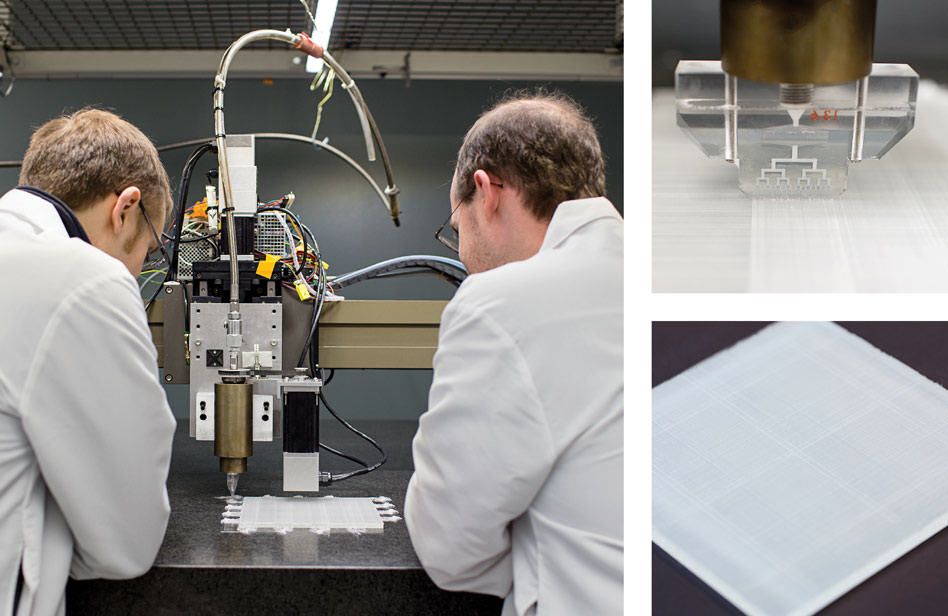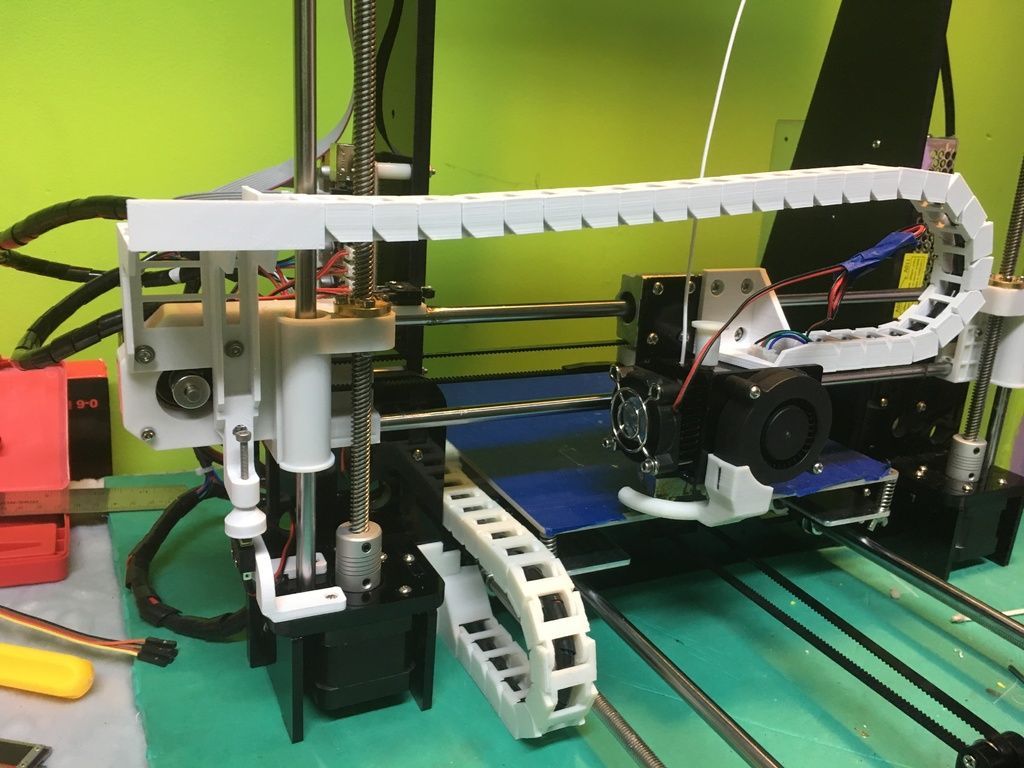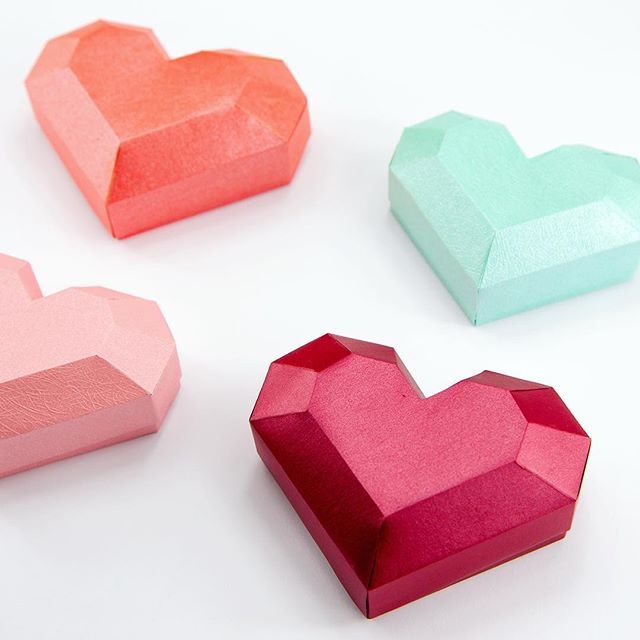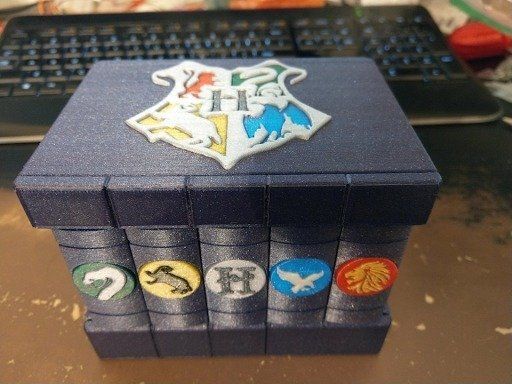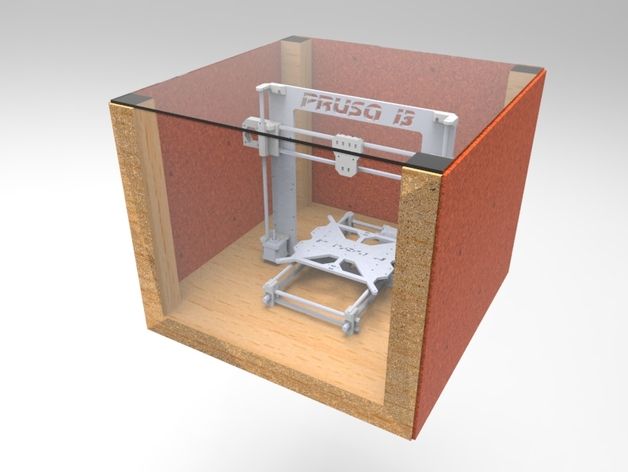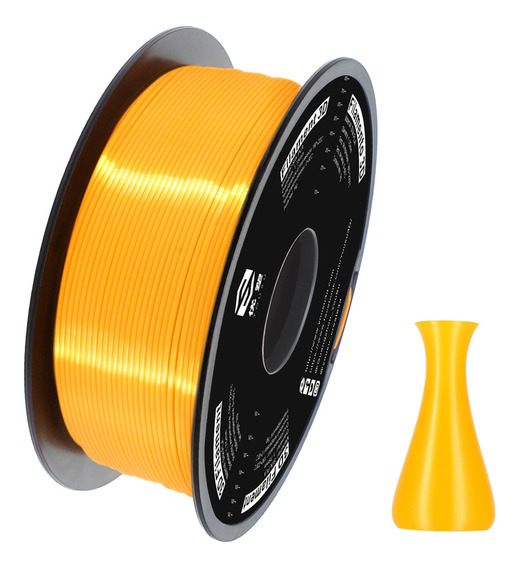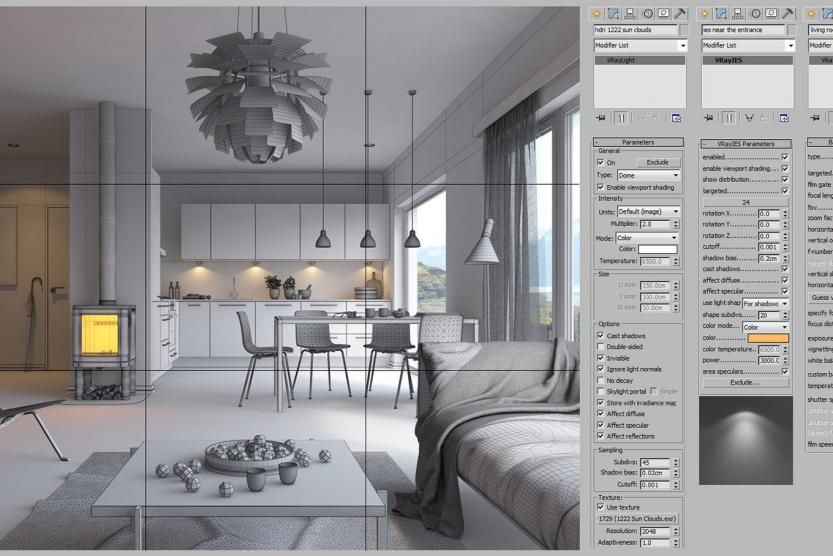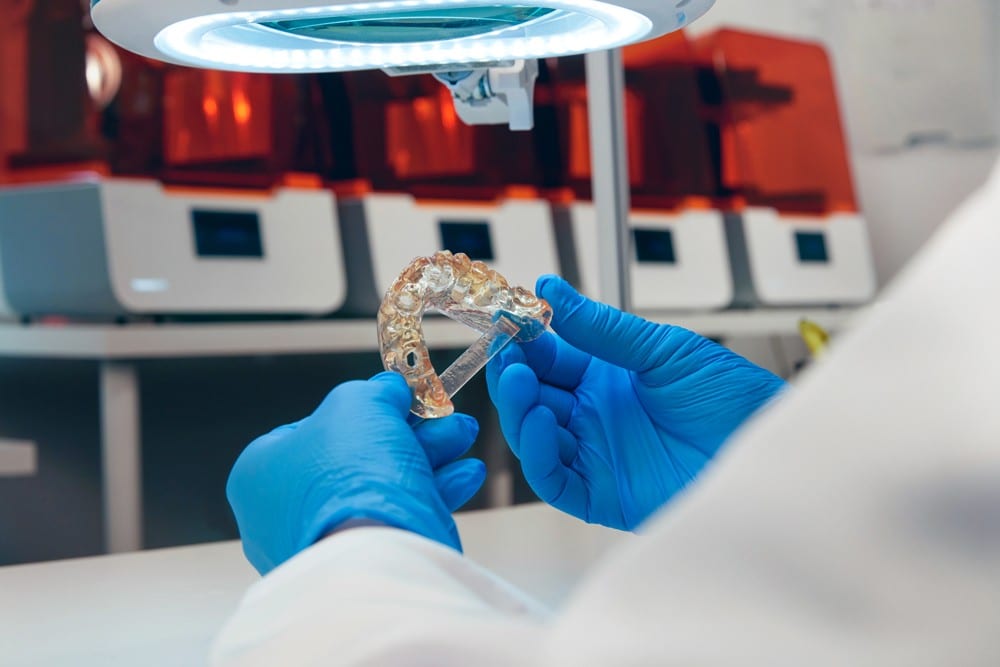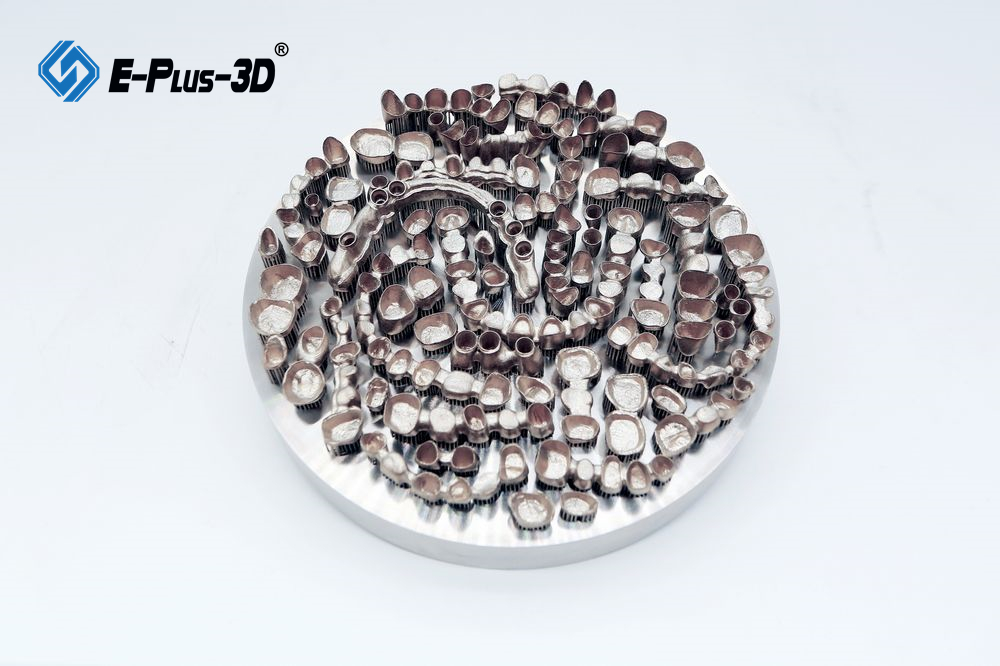3D printing breakthrough
3D printing breakthrough enables custom tablets to be produced in just seven seconds
0Shares
Researchers at the University of Santiago de Compostela, MERLN Institute University College London (UCL) and UCL spin-out FabRx, have come up with a way of 3D printing tablets inside of seven seconds.
As opposed to the normal vat photopolymerization process, which can be used to print pills layer-by-layer, the team’s volumetric printing approach is capable of curing full vats of resin in a single run. In doing so, the scientists say their technology has the potential to ramp up the rate at which custom medication is produced, a USP that could prove vital to making end-use clinical 3D printing more viable.
“This could really be a game-changer for the pharmaceutical industry,” Alvaro Goyanes, one of the UCL scientists behind the project told the i newspaper. “Personalized 3D printed medicines are evolving at a rapid pace. They are starting to reach the clinic for trials and in a best case scenario they could be used in the health service in three to five years. ”
FabRx’s custom medication drive
Since 2016, when Aprecia established itself as an early leader in additive manufactured medicine with the launch of fast-dissolving Spiritam, the first FDA-approved 3D printed drug, it’d be fair to say that the technology has come on leaps and bounds.
By 2020, for instance, researchers in Pakistan had proved it possible to 3D print antibiotics with optimized drug-release rates, via fused deposition modeling (FDM) technology and precise infill control. Earlier that year, a team based at St. John’s University also took a similar approach to 3D printing egg-shaped capsules, designed to be difficult to crush by those trying to abuse prescribed opioids.
More recently, FabRx itself has made advances in the field of tailored medicine as well, developing a means of Selective Laser Sintering (SLS) braille-patterned printlets for the visually impaired, as well as launching its M3DIMAKER system.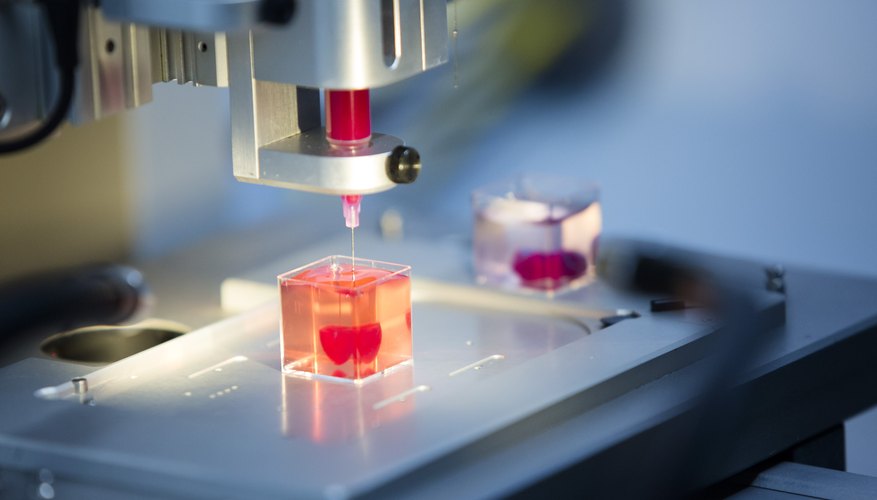
Marketed as the ‘first pharmaceutical 3D printer for personalized medicines,’ the machine features a multi-nozzle setup that allows users to switch heads and change from FDM to Direct Powder Extrusion production. The start-up also boasts that the system is supported by software that allows it to create prescribed pills on-demand, but this progress hasn’t stopped it iterating upon its technology.
In fact, working with colleagues at Universidade de Santiago de Compostela and UCL late last year, FabRx managed to develop its own smartphone-powered tablet 3D printer. Built around a modified M3DIMAKER, the team’s revised setup proved capable of producing customized blood-thinning capsules, and it was thought at the time that it could be used to improve access to prescribed medication.
The researchers’ previously-developed smartphone-powered LCD 3D printer. Image via UCL.Vat polymerization’s speed limit
So, given FabRx’s track record of relative success in 3D printing drugs with custom release profiles, shapes and sizes, why hasn’t it managed to achieve greater traction in the pharmaceutical sector? Well, aside from issues such as gaining regulatory approval and passing the relevant testing procedures, there’s also a commercial drawback to adopting 3D printing in this way: throughput.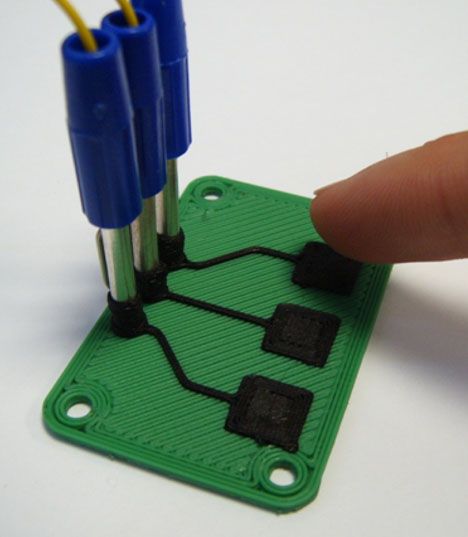
According to the UCL-led team, “existing 3D printing technologies don’t afford the speeds required for the on-demand production of medicines in fast-paced clinical settings.” However, the scientists add that volumetric printing “exploits the threshold behavior” that occurs in polymerization to cure masses of resin, hence it may offer a solution to this.
Now, building on the work carried out in their previous study, the researchers have found a way of putting this approach into practice, by manipulating light in such a controlled way, that it can solidify vats of resin simultaneously. This is said to have been achieved by tweaking the intensity of emitted rays and applying them at various angles, until the full mass of material can be polymerized in one go.
The UCL team’s 3D printed pill prototypes. Photo via UCL.Volumetric 3D printing in-action
During their study, the researchers deployed a modified 3D printer to assess the efficacy of their revised approach, and produce tablets from six different photoinitiator-loaded resins, with paracetamol being used as a model drug. Initial results from these tests showed that the team were able to produce tablets with tunable drug release profiles, at a rate of anything from 7 to 17 seconds per pill.
Initial results from these tests showed that the team were able to produce tablets with tunable drug release profiles, at a rate of anything from 7 to 17 seconds per pill.
With further development, the scientists say that their approach could be used to create ‘polypills’ at pace, the likes of which incorporate tailored doses or multiple medications, but tend to come with longer lead times. One application the technology is currently reportedly being trialed in, involves 3D printing cancer therapy and anti-side-effect drugs inside the same pill at a French hospital.
“To reduce the risk of recurrence, many women with early-stage breast cancer are treated with hormone therapy for five years, often with additional treatments to manage side effects,” Maxime Annereau, the Gustave Roussy hospital pharmacist leading the project explained to the i newspaper. “Taking all of these treatments in a single 3D printed tablet with a personalized dose should make it easier to complete the treatment.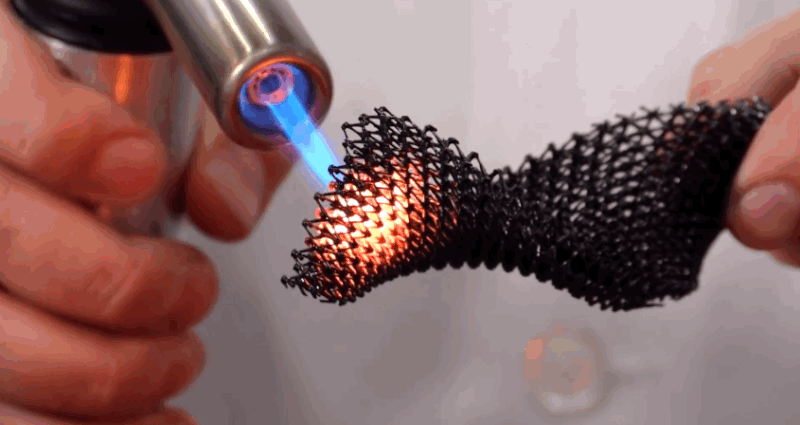 ”
”
Another potential application of the technology lies in the production of more appetizing medication for poorly kids, especially given that London’s Great Ormond Street Children’s Hospital is said to be weighing up installing a 3D printer at its pharmacy, with its team of specialists there believing that the technology could, in future, become an essential piece of kit.
“I am already looking to put a 3D printer in the pharmacy at GOSH to support trials of use of 3D medicines,” Steve Tomlin, Chief Pharmacist at the Great Ormond Street Children’s Hospital also told the i newspaper. “Knowledge of genetic differences in people’s responses to medicines (pharmacogenomics) means that we know that for many drugs one size does not fit all.”
The researchers’ findings are detailed in their paper titled “Volumetric 3D printing for rapid production of medicines.” The study was co-authored by Lucía Rodríguez-Pombo, Xiaoyan Xu, Alejandro Seijo-Rabina, Jun Jie Ong, Carmen Alvarez-Lorenzo, Carlos Rial, Daniel Nieto, Simon Gaisford, Abdul W. Basit and Alvaro Goyanes.
Basit and Alvaro Goyanes.
To stay up to date with the latest 3D printing news, don’t forget to subscribe to the 3D Printing Industry newsletter or follow us on Twitter or liking our page on Facebook.
For a deeper dive into additive manufacturing, you can now subscribe to our Youtube channel, featuring discussion, debriefs, and shots of 3D printing in-action.
Are you looking for a job in the additive manufacturing industry? Visit 3D Printing Jobs for a selection of roles in the industry.
Featured image shows a diagram depicting the methodology behind the team’s approach. Image via UCL.
Tags Alvaro Goyanes aprecia FabRx Gustave Roussy M3DIMAKER Maxime Annereau MERLN Institute for Technology-Inspired Regenerative Medicine St Johns University Steve Tomlin University College London University of Santiago de Compostela
Paul Hanaphy
Paul is a history and journalism graduate with a passion for finding the latest scoop in technology news.
A breakthrough 3D-printed material incredibly strong and ductile
“This unusual microstructure’s atomic rearrangement gives rise to ultrahigh strength as well as enhanced ductility, which is uncommon, because usually strong materials tend to be brittle,” Chen explained. Compared to conventional metal casting, “we got almost triple the strength and not only didn’t lose ductility, but actually increased it simultaneously,” he says. “For many applications, a combination of strength and ductility is key. Our findings are original and exciting for materials science and engineering alike,” he added.
“The ability to produce strong and ductile HEAs means that these 3D printed materials are more robust in resisting applied deformation, which is important for lightweight structural design for enhanced mechanical efficiency and energy saving,” says Jie Ren, Chen’s Ph.D. student and first author of the paper.
UMass Amherst Ph.D. student Jie Ren holds a miniature heatsink fan
UMass Amherst
The computational modelling for the study was coordinated by Zhu's team at Georgia Tech. To comprehend the mechanical roles played by both the FCC and BCC nanolamellae and how they cooperate to provide the material more strength and ductility, he constructed dual-phase crystal plasticity computer models.
To comprehend the mechanical roles played by both the FCC and BCC nanolamellae and how they cooperate to provide the material more strength and ductility, he constructed dual-phase crystal plasticity computer models.
“Our simulation results show the surprisingly high strength yet high hardening responses in the BCC nanolamellae, which are pivotal for achieving the outstanding strength-ductility synergy of our alloy. This mechanistic understanding provides an important basis for guiding the future development of 3D printed HEAs with exceptional mechanical properties,” Zhu says.
Additionally, 3D printing provides a strong tool for producing parts with intricate geometries. Future direct manufacture of end-use components for biomedical and aerospace applications will have plenty of options thanks to the combination of 3D printing technology and the enormous alloy design space of HEAs.
You can view the entire study for yourself in the journal Nature.
Study abstract:
"Additive manufacturing produces net-shaped components layer by layer for engineering applications1,2,3,4,5,6,7. The additive manufacture of metal alloys by laser powder bed fusion (L-PBF) involves large temperature gradients and rapid cooling2,6, which enables microstructural refinement at the nanoscale to achieve high strength. However, high-strength nanostructured alloys produced by laser additive manufacturing often have limited ductility3. Here we use L-PBF to print dual-phase nanolamellar high-entropy alloys (HEAs) of AlCoCrFeNi2.1 that exhibit a combination of a high yield strength of about 1.3 gigapascals and a large uniform elongation of about 14 per cent, which surpasses those of other state-of-the-art additively manufactured metal alloys. The high yield strength stems from the strong strengthening effects of the dual-phase structures that consist of alternating face-centred cubic and body-centred cubic nanolamellae; the body-centred cubic nanolamellae exhibit higher strengths and higher hardening rates than the face-centred cubic nanolamellae. The large tensile ductility arises owing to the high work-hardening capability of the as-printed hierarchical microstructures in the form of dual-phase nanolamellae embedded in microscale eutectic colonies, which have nearly random orientations to promote isotropic mechanical properties.
The additive manufacture of metal alloys by laser powder bed fusion (L-PBF) involves large temperature gradients and rapid cooling2,6, which enables microstructural refinement at the nanoscale to achieve high strength. However, high-strength nanostructured alloys produced by laser additive manufacturing often have limited ductility3. Here we use L-PBF to print dual-phase nanolamellar high-entropy alloys (HEAs) of AlCoCrFeNi2.1 that exhibit a combination of a high yield strength of about 1.3 gigapascals and a large uniform elongation of about 14 per cent, which surpasses those of other state-of-the-art additively manufactured metal alloys. The high yield strength stems from the strong strengthening effects of the dual-phase structures that consist of alternating face-centred cubic and body-centred cubic nanolamellae; the body-centred cubic nanolamellae exhibit higher strengths and higher hardening rates than the face-centred cubic nanolamellae. The large tensile ductility arises owing to the high work-hardening capability of the as-printed hierarchical microstructures in the form of dual-phase nanolamellae embedded in microscale eutectic colonies, which have nearly random orientations to promote isotropic mechanical properties.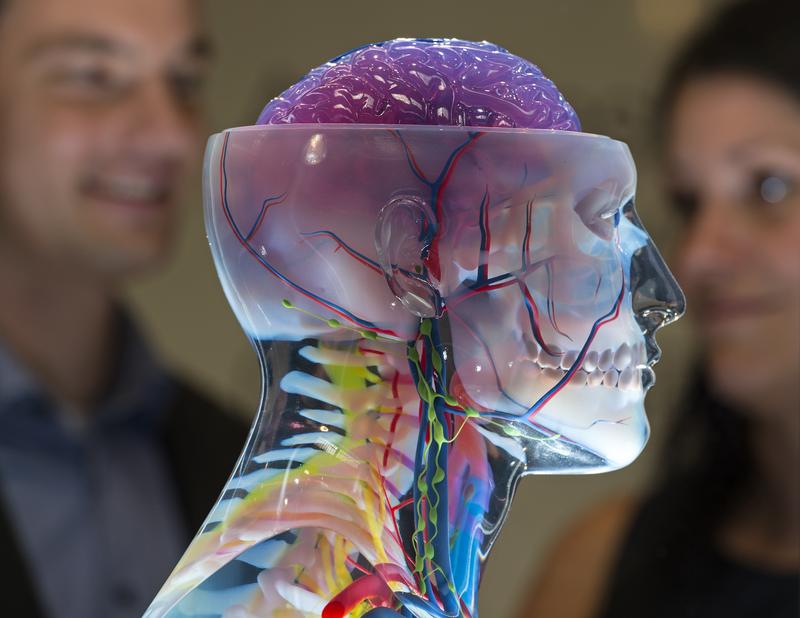 The mechanistic insights into the deformation behaviour of additively manufactured HEAs have broad implications for the development of hierarchical, dual- and multi-phase, nanostructured alloys with exceptional mechanical properties."
The mechanistic insights into the deformation behaviour of additively manufactured HEAs have broad implications for the development of hierarchical, dual- and multi-phase, nanostructured alloys with exceptional mechanical properties."
3D printer 'The Beast' - a breakthrough in Russian 3D printing!
3D printing
Subscribe to the author
Subscribe
Don't want
5
In the Russian 3D printing market, you can find dozens of different 3D printers with different characteristics. Of particular note is the domestic 3D printer Zver.
Designed by the best engineers in the country, the "Beast" outperforms its competitors many times over. Its extended print area is truly impressive, with a working area of 450mm x 530mm x 750mm. This greatly simplifies the printing of large objects, since with such characteristics no gluing of parts is required, the print object itself is solid and more reliable in use. What makes this printer different from others is the movement of the extruders on rails, which gives high precision and quality to the print. "The Beast" is a closed structure, which is equipped with an advanced two-zone heating table. This allows you to significantly reduce energy costs in cases where printing on the entire table is not required. Table heating up to 120 degrees is achieved in less than 4 minutes. nine0003
What makes this printer different from others is the movement of the extruders on rails, which gives high precision and quality to the print. "The Beast" is a closed structure, which is equipped with an advanced two-zone heating table. This allows you to significantly reduce energy costs in cases where printing on the entire table is not required. Table heating up to 120 degrees is achieved in less than 4 minutes. nine0003
"The Beast" is one of the few printers on the market that has two extruders with nozzle adjustment from 0.3 mm to 1.2 mm. Depending on the purpose of the object, the specialist selects the required diameter. A large nozzle will provide fast printing of a large object with a low degree of detail, and a small one can create miniature products with a drawing of every little thing. The presence of two extruders allows you to print either two different colors of the same material, or use the main and supporting material to create a more accurate model. Unlike the first model of the Zver 3D printer, the second model is equipped with auto-calibration, which greatly facilitates work and simplifies printer management.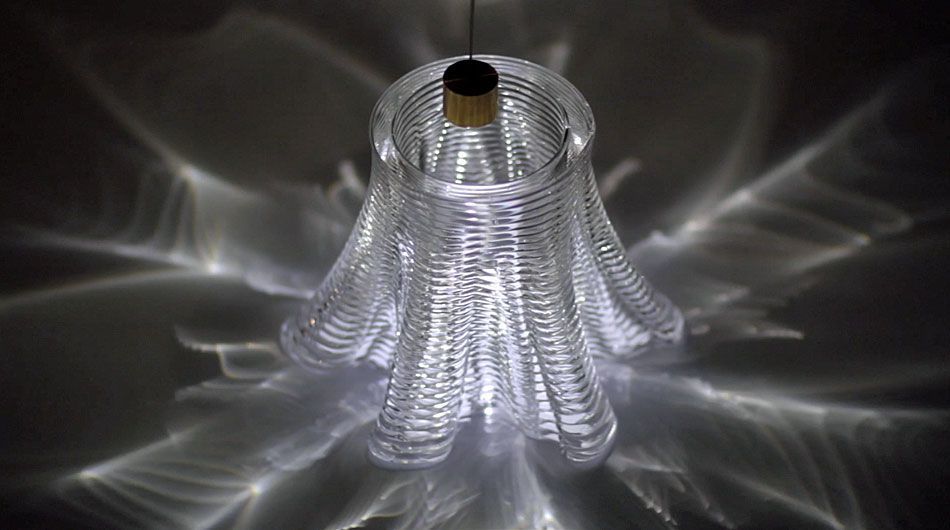 Sending for printing is carried out both with the help of a computer and via micro-SD. nine0003
Sending for printing is carried out both with the help of a computer and via micro-SD. nine0003
Zver 3D printer works on FDM printing technology using various types of materials - ABS, PLA, PVA, Hips. Thanks to two extruders, the owner of the "Beast" can use two materials at the same time, which allows you to create sophisticated and exclusive items.
"The Beast" is an excellent analogue of foreign 3D printers. Taking into account the current situation in the world, Russia is starting an active policy of import substitution, actively supporting Russian manufacturers of industrial equipment and specialists in new technologies. The new Russian 3D printer does not differ in print quality from its foreign counterparts, but its price is an order of magnitude lower, since it does not depend on the exchange rate and political events affecting the country's economy. nine0003
The Zver 3D printer can be used in various sectors, from architecture to industry. The characteristics of the printer (especially its large print area) impress specialists, it is rightfully called the leader of modern 3D printing.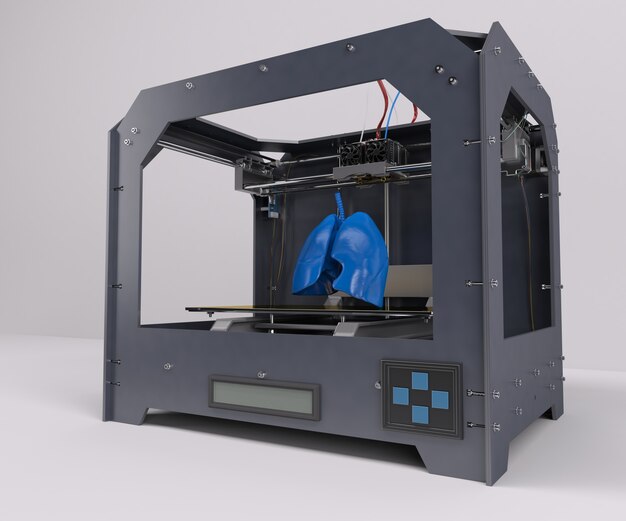
Subscribe to the author
Subscribe
Don't want
5
3D printing - a breakthrough in medical technology uMEDp
3D printing can be called the technology of the year. nine0036
With the help of 3D printers, this technology has penetrated many different areas of life. 3D printers are used to create accessories, dishes, designer models and even weapons. Printers for private use and professional tools are already on the market. And recently there has also been a trend in the use of this technology in medicine.
Both experts and non-specialists agree that 3D printing is quite capable of changing the life of society, as people with its help get the opportunity to actually create things that are necessary in everyday life. 3D printing may not be a common feature of everyday life for a long time, but in medicine this technology has already begun to make breakthroughs.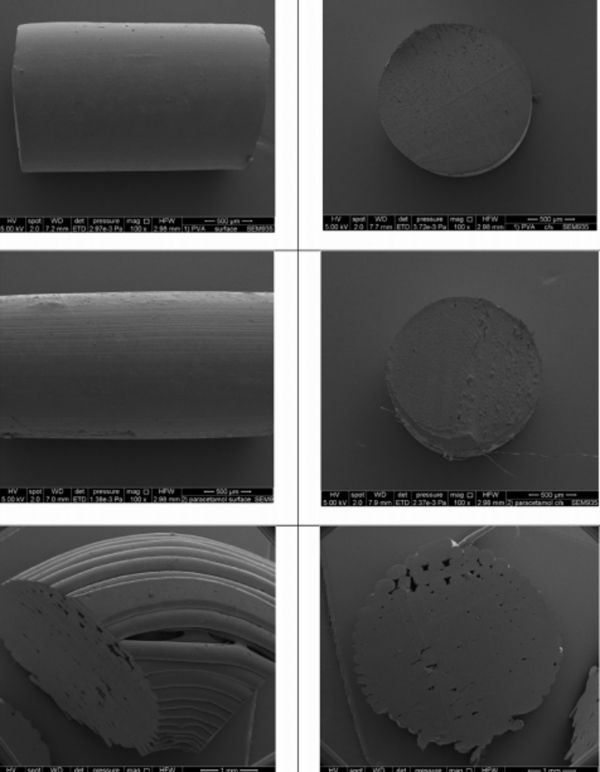 nine0003
nine0003
According to Ashkhen Hovsepyan, director of SIU System, the official distributor of the American corporation 3D Systems: “Medicine is one of the most important and most promising areas for the development of 3D technologies. 3D printing can be used in transplantology, traumatology, prosthetics, plastic surgery, dentistry and many other areas.”
3D technologies in modern medicine are used in different ways - some are used partially so that they can be modified for various tasks, and some technologies have fully entered the workflow. nine0003
Dentistry
3D technologies are used most actively in this area. Align Technology introduced 3D printed aligners to the market back in 1999. Mouthguards are a convenient alternative to braces that do not cause any inconvenience, as they are transparent and therefore invisible on the teeth. The company currently produces over 650,000 caps per day. To create a cap, the patient's jaw is scanned in all angles.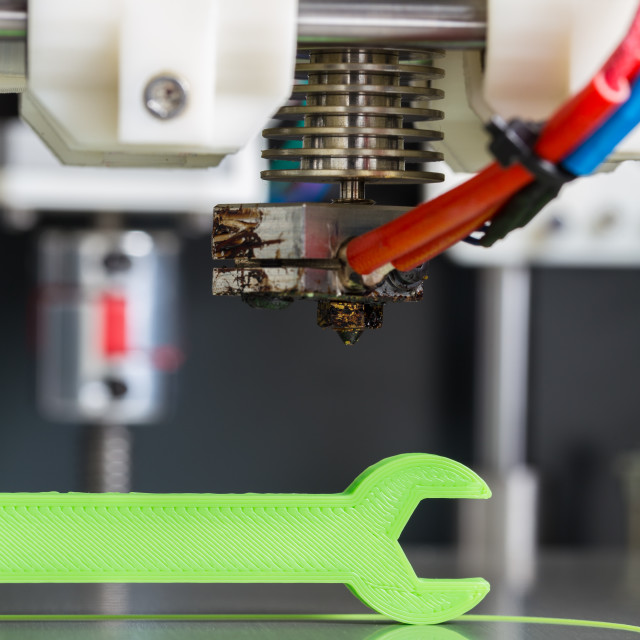 Then individual mouthguards are created - they have to be printed again every two weeks, since changes have occurred in the dentition during this time. nine0003
Then individual mouthguards are created - they have to be printed again every two weeks, since changes have occurred in the dentition during this time. nine0003
According to A. Hovsepyan: “Many people are embarrassed to wear braces: such constructions look unaesthetic. Clients prefer to stay with a malocclusion for life, so mouthguards are ideal for these people. Some Moscow dentists are already using this method to create a Hollywood smile.”
With the help of 3D printers, it is also possible to create an impression of the jaw and teeth much cheaper, easier and faster. This approach is used, for example, at the Moscow State University of Medicine and Dentistry. There, students are already being taught the use of 3D technologies in dentistry using specially purchased equipment. nine0003
Hearing aids
Widex has been using proprietary hearing technology since 2012. First, liquid silicone is injected into the auricle, on the basis of which an impression is created.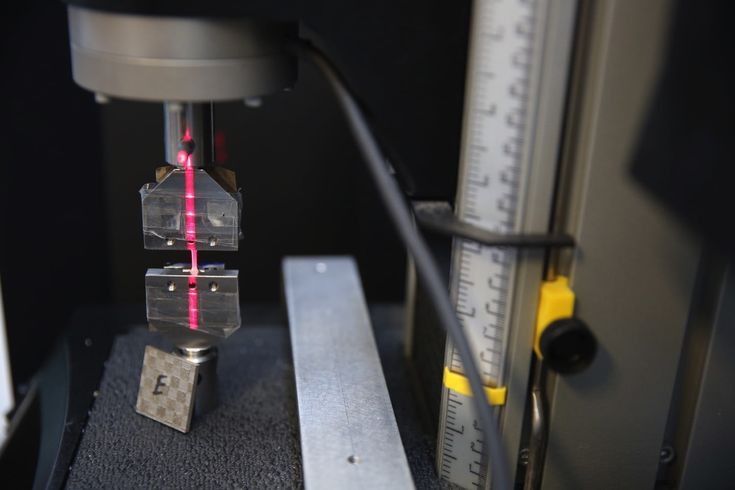 The 3D impression model is then processed on a 3D scanner and reproduced by a 3D printer. The hearing aid is inserted into the model and the result is a miniature and precise ITE.
The 3D impression model is then processed on a 3D scanner and reproduced by a 3D printer. The hearing aid is inserted into the model and the result is a miniature and precise ITE.
In'Tech took a different approach. In 2001, they started working with the Viper SLA printer. It allows you to make a shell for hearing devices that can be inserted inside the ear. The sheath accuracy can be adjusted within a millimeter. nine0003
Transplantology
What once seemed like science fiction is now becoming a reality - 3D printing can create organ parts for transplants. In 2012, a Belgian woman was first transplanted with a jaw created in this way. Although there is no talk of creating a complete organ yet - 3D printing, of course, is not able to recreate full-fledged kidneys, heart valves or a liver.
However, a 3D printer is quite capable of replacing parts and components of the body. In the United States, exoskeleton elements have already been printed on a 3D printer for a two-year-old girl Emma, who suffers from arthrogripposis.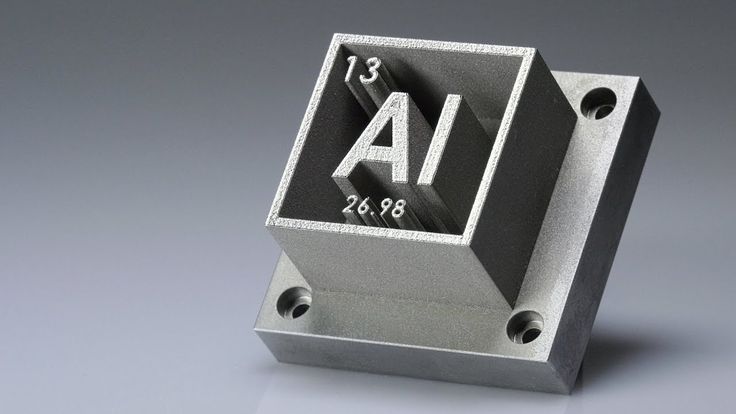 This is a disease of the musculoskeletal system, in which the joints and muscles are underdeveloped, and deformity and contraction of the limbs occur. But the auxiliary exoskeleton helped the child move his arms, which means he could draw and play. In 2013, scientists have already created a whole exoskeleton for the girl Amanda Boxtel (Amanda Boxtel), who, due to paralysis after a fall on skis, could not walk for 22 years. nine0003
This is a disease of the musculoskeletal system, in which the joints and muscles are underdeveloped, and deformity and contraction of the limbs occur. But the auxiliary exoskeleton helped the child move his arms, which means he could draw and play. In 2013, scientists have already created a whole exoskeleton for the girl Amanda Boxtel (Amanda Boxtel), who, due to paralysis after a fall on skis, could not walk for 22 years. nine0003
“The developers of 3D Systems have been able to put a woman on her feet. Her spine, lower legs and thighs were 3D scanned, after which a complete exoskeleton was printed. Amanda was able to get up and move around on her own again. Control units and complex mechanical drives provided by EksoBionics specialists were combined with elements printed on a 3D printer,” says Hovsepyan.
Russian science does not lag behind American colleagues. In 2013, a private laboratory for biotechnical research "3D Bioprinting Solutions" was opened on the basis of Skolkovo - here the methods of three-dimensional organ bioprinting are studied from all sides. In addition to titanium implants, 3D printing can also create bone models that are as similar in structure to real ones as possible. Such technology would make transplant operations safer and easier. nine0003
In addition to titanium implants, 3D printing can also create bone models that are as similar in structure to real ones as possible. Such technology would make transplant operations safer and easier. nine0003
Oncology
Can 3D printing help people with cancer? Scientists expect to use 3D models not only for rehabilitation after surgery, but also to prevent the development of tumors. There are already examples of this from practice: the patient had the left side of his face completely removed due to a malignant tumor. But 3D printing has helped surgeons implant a facial prosthesis that allows patients to eat properly.
The prospect of cancer prevention with 3D technology is just beginning to develop. In DNA, there is a sequence of G-quadruplex molecules that cannot be depicted in two-dimensional space. Scientists from the University of Alabama have created a model of such a molecule on a 3D printer. This model is expected to help understand how to influence such molecules in order to stop the division of cancer cells in the pancreas.